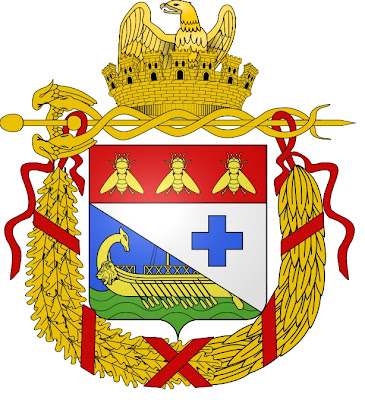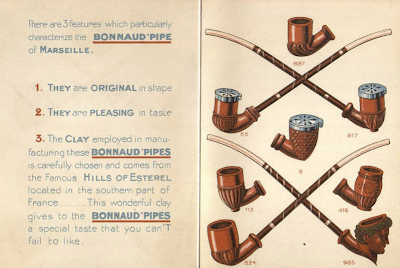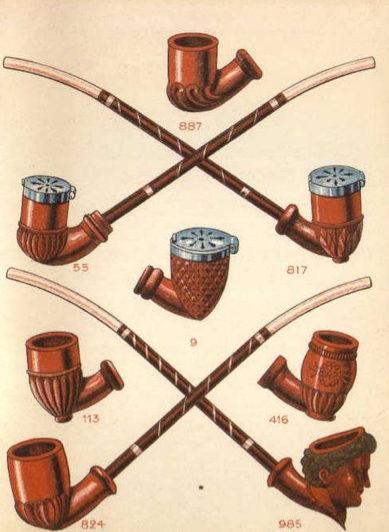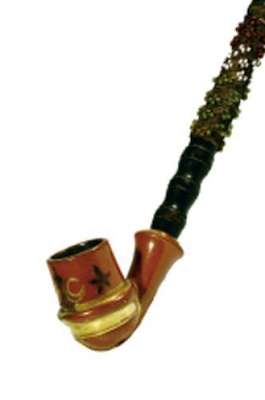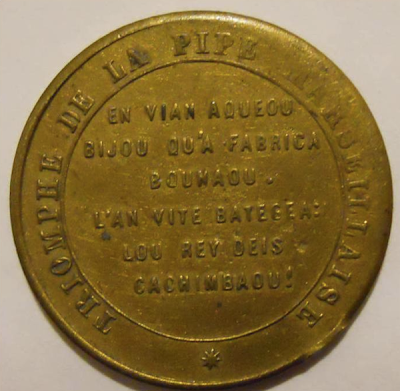Nous vous proposons PIPE BONNAUD MARSEILLE TERRE CUITE CIRCA 1900 NUMERO 208 MERCURE
Dans le gout des Tophane Chibouk Ottoman de Constantinople
Petites usures et imperfections ( chaque pipe est différente )
Dimensions 3,5 / 1,2 cm
Diamètre foyer environ 8 mm
Superbe
Petit prix. A saisir.
Bonnaud was a clay pipe manufacturer operating in the Mediterranean port of Marseille, France.
As an exhibition piece or Pipe d'Etalage, Bonnaud manufactured ca 1870 an oversized clay pipe, 7.2 inches (18 cm) high and 4.8 inches (12 cm) in diameter, of brown clay with polychrome décor,
painted with the emblem of the city of Marseille,
as designed under the First Empire (1804-1814).
While they never reached the level of international fame of the clay pipe manufacturer Gambier located in the northern town of Givet, France, the Bonnaud family from Marseille manufactured very high quality polychrome clay pipes.
As Ben Rapaport observed "In France the undisputed Nineteenth Century producer [of red clay pipes] was Hyppolyte Léon Bonnaud, Marseille. Founded in 1824, this firm specialized in marketing a colorful array of unglazed and glazed reddish brown figurals and straight stemmers for more than a century until it closed its doors in 1955." (p 23. A complete Guide to collecting Antique Pipes, 1979)
The Bonnaud catalog offers a unique insight into what those figurals and straight stemmers actually looked like...
and where the red clay came from,
Bonnaud manufactured primarily for exports.
The bowl shapes and their natural red color would be appealing to smokers from the Orient and are reminiscent of the clay pipes of the region, the tophane of Constantinople,
or the pipe bowl of a chibouk from Alexandria.
This should not come as a surprise given the long history of Marseille as the French Mediterranean trading port with Africa and the Orient.
Here is a picture of pipe model # 230 from the above plate,
and a picture of pipe model # 518.
A definite flair in both cases...
Somewhat intriguingly ,Bonnaud, on at least one occasion, had some token coins minted...
Could it be that the above mentioned Bonace was a gifted or inspired worker whose pipes were exceptional or different, and that such pipes were sold with a token worth 75 centimes, as French pipe expert Bernard Mamy suggested?
What the true purpose of the coin was we might never know.
However, as Mamy noted, what we know is that the engraved word of Cachimbau means tophane pipe or red pipe bowl of a chibouk in provençal dialect…
As an exhibition piece or Pipe d'Etalage, Bonnaud manufactured ca 1870 an oversized clay pipe, 7.2 inches (18 cm) high and 4.8 inches (12 cm) in diameter, of brown clay with polychrome décor,
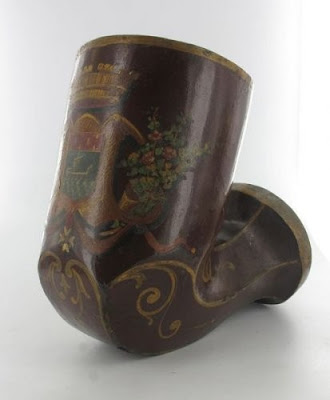 |
| In addition to the emblem of the city of Marseille painted on the bowl, the keel, shank and shank end are elegantly integrated through a subtle combination of swirling gold highlights. |
painted with the emblem of the city of Marseille,
as designed under the First Empire (1804-1814).
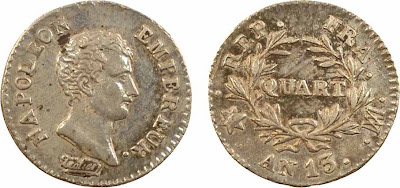 |
| Profile of Napoléon Ier, An 13, quarter Franc, Silver, 15 mm, 1.24 g, minted in Marseille |
While they never reached the level of international fame of the clay pipe manufacturer Gambier located in the northern town of Givet, France, the Bonnaud family from Marseille manufactured very high quality polychrome clay pipes.
As Ben Rapaport observed "In France the undisputed Nineteenth Century producer [of red clay pipes] was Hyppolyte Léon Bonnaud, Marseille. Founded in 1824, this firm specialized in marketing a colorful array of unglazed and glazed reddish brown figurals and straight stemmers for more than a century until it closed its doors in 1955." (p 23. A complete Guide to collecting Antique Pipes, 1979)
The Bonnaud catalog offers a unique insight into what those figurals and straight stemmers actually looked like...
and where the red clay came from,
| Hills of Estérel: The soil and rocks of the range are of volcanic origin, composed mainly of porphyry, which gives the hills a red color |
Bonnaud manufactured primarily for exports.
The bowl shapes and their natural red color would be appealing to smokers from the Orient and are reminiscent of the clay pipes of the region, the tophane of Constantinople,
or the pipe bowl of a chibouk from Alexandria.
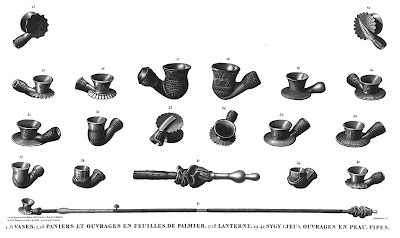 |
| Pipes available in Rosetta during the French occupation of Egypt (1798-1801) (État Moderne 1817 Tome Second, II.ème Partie: Planche ii drawn by the architect of the King Cécile) |
This should not come as a surprise given the long history of Marseille as the French Mediterranean trading port with Africa and the Orient.
 |
| Marseille in the XVIIIth century |
Here is a picture of pipe model # 230 from the above plate,
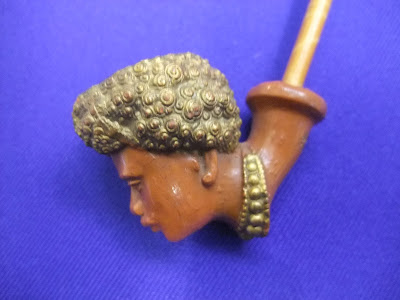 |
| Courtesy Antique Pipe Co. |
and a picture of pipe model # 518.
 |
| Courtesy ClayPipes.nl |
A definite flair in both cases...
Somewhat intriguingly ,Bonnaud, on at least one occasion, had some token coins minted...
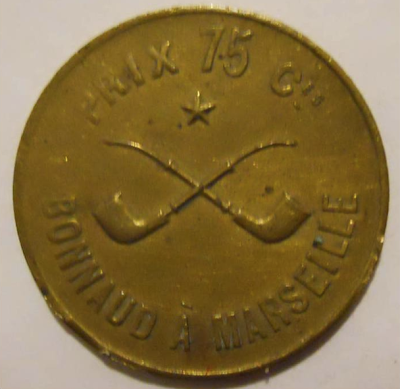 |
| Recto inscribed Bonnaud à Marseille, Prix 75 centimes, elegant carving of Bonnaud's flagship pipe. |
Could it be that the above mentioned Bonace was a gifted or inspired worker whose pipes were exceptional or different, and that such pipes were sold with a token worth 75 centimes, as French pipe expert Bernard Mamy suggested?
What the true purpose of the coin was we might never know.
However, as Mamy noted, what we know is that the engraved word of Cachimbau means tophane pipe or red pipe bowl of a chibouk in provençal dialect…

